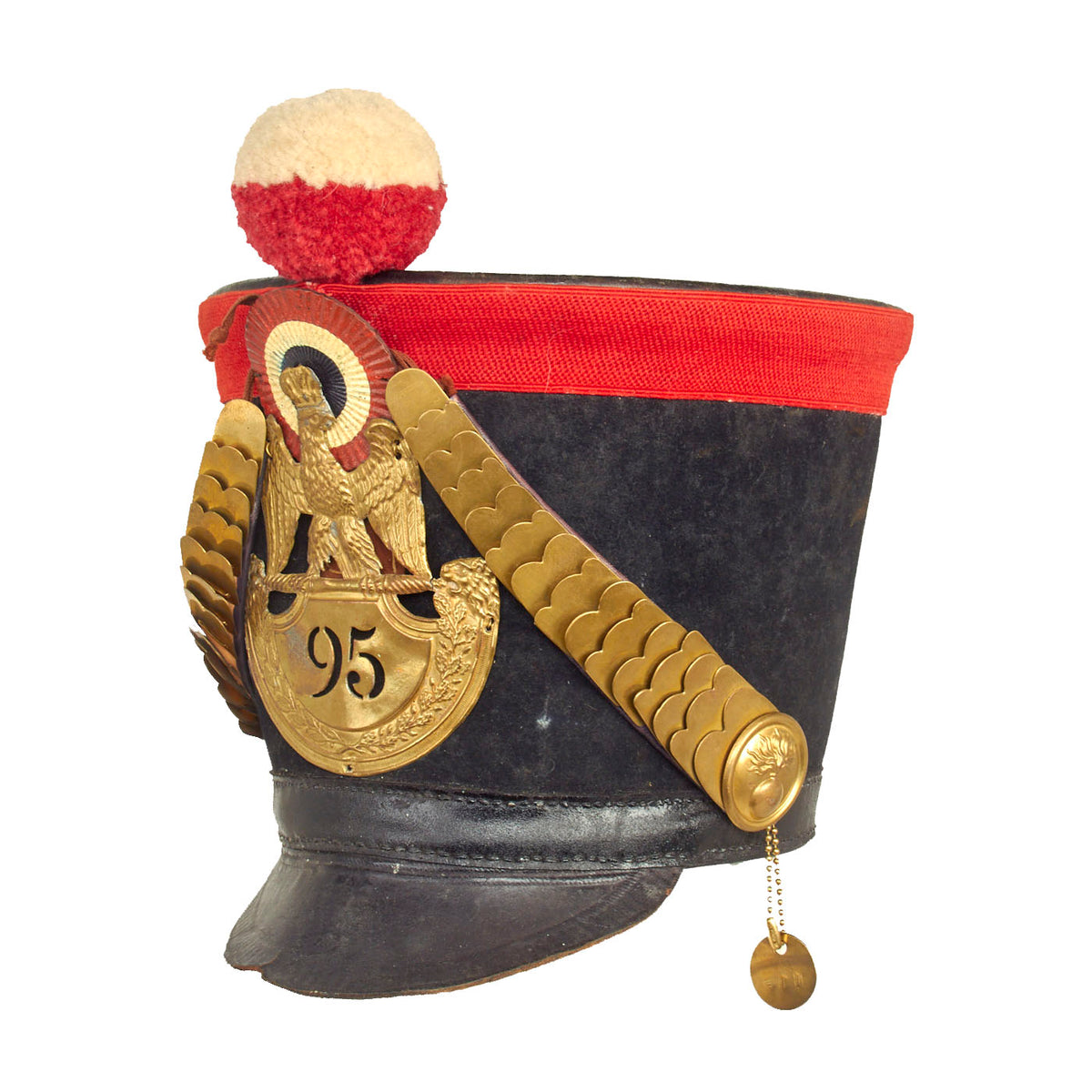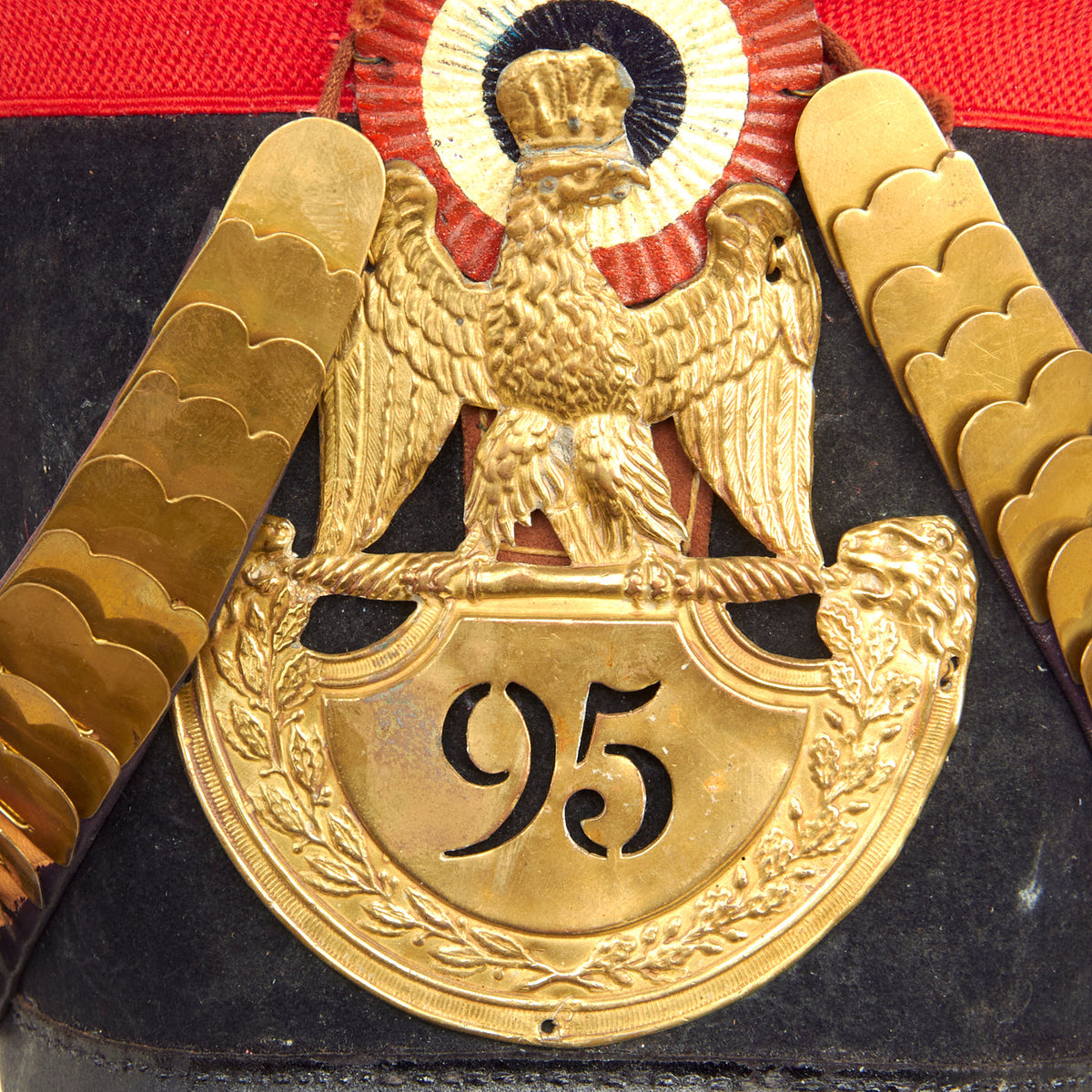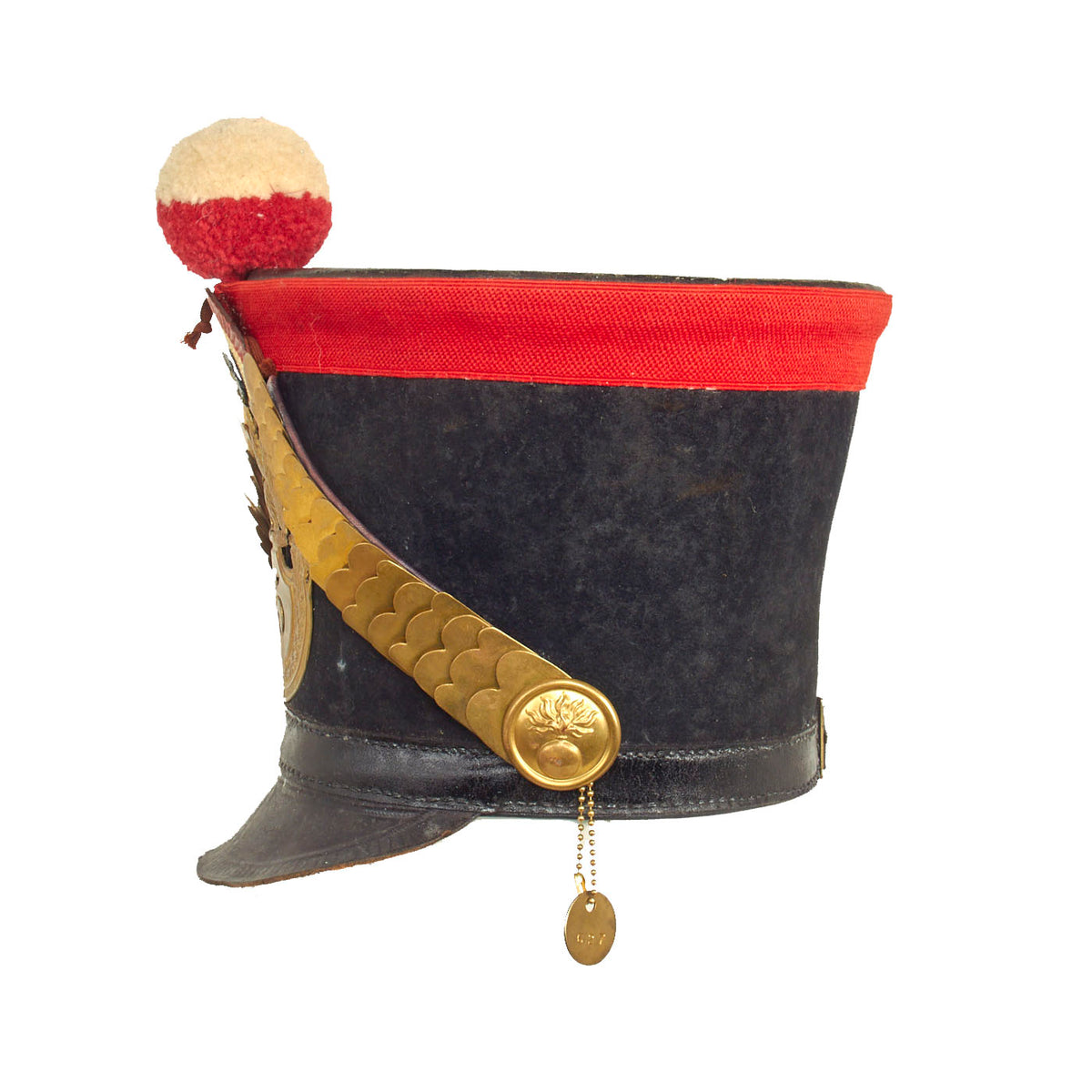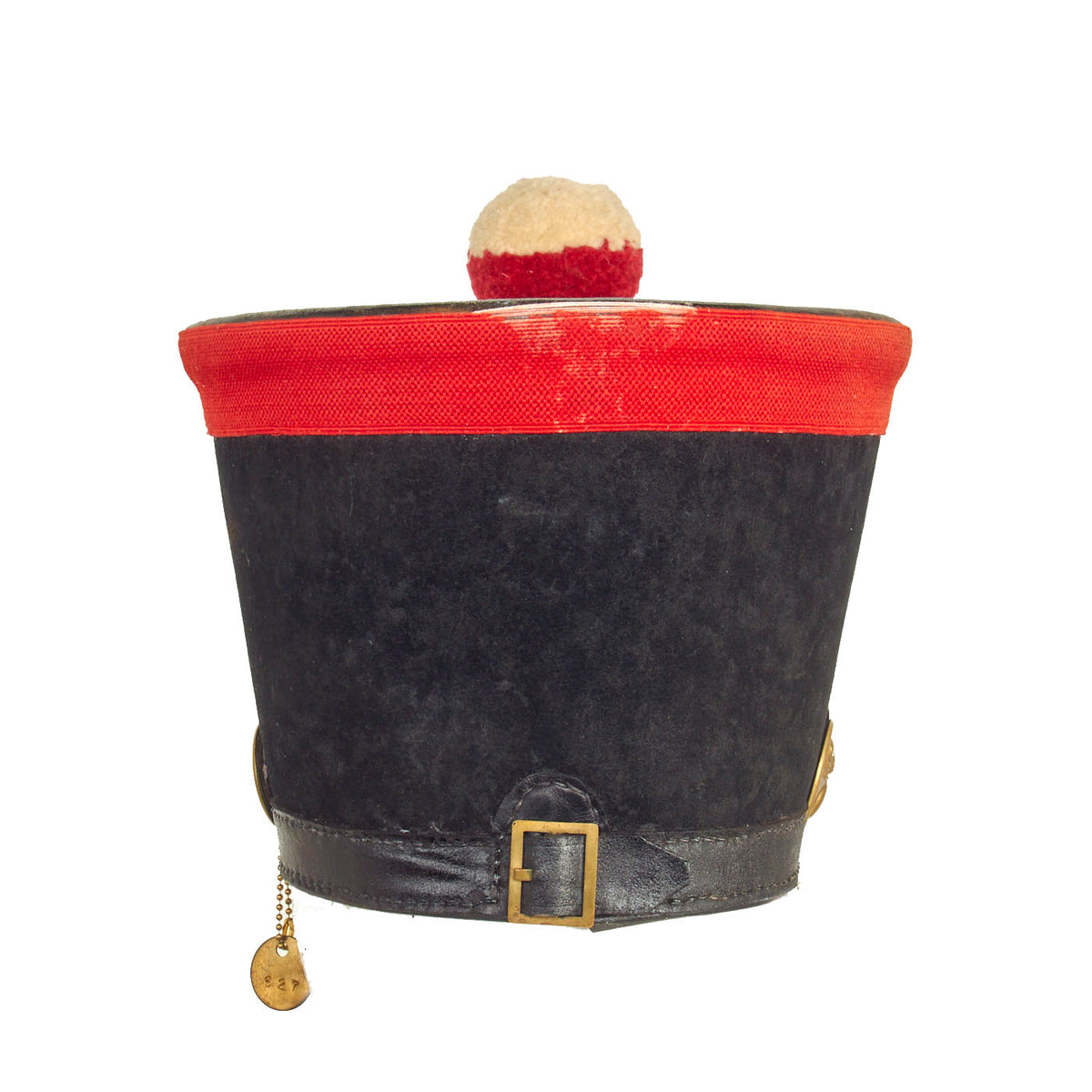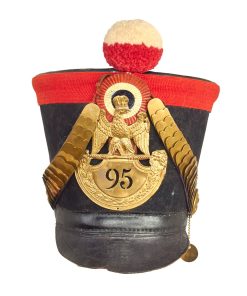Museum Quality Replica French Napoleonic “Bell-Top” Shako With ORIGINAL 9th Infantry Regiment Front Plate Original Items
$ 995,00 $ 248,75
New Made Museum Quality Replica Item With Original Parts: Only One Available. A shako is a tall, cylindrical military cap, usually with a visor, and sometimes tapered at the top. It is usually adorned with an ornamental plate or badge on the front, metallic or otherwise; and often has a feather, plume (see hackle) or pom pom attached at the top.
The word shako originated from the Hungarian name csákó for the peak, which Hungarian border soldiers (Grenz-Infanterie) added around 1790 to their previously visorless stovepipe-style hats. Originally these hats were part of the clothing commonly worn by shepherds, before being added to the uniform of the Hungarian hussar in the early 18th century. Other spellings include chako, czako, sjako, schako, schakot and tschako.
From 1800 on, the shako became a common military headdress worn by the majority of regiments in the armies of Europe and the Americas. Replacing in most instances the light bicorne, the shako was initially considered an improvement. Made of heavy felt and leather, it retained its shape and provided some protection for the soldier’s skull, while its visor shaded his eyes. It retained this preeminence until the mid-19th century, when spiked helmets began to appear in the army of Prussia, which influenced armies of the various German states; and the more practical kepi replaced it for all but parade wear in the French Army. The Imperial Russian Army substituted a spiked helmet for the shako in 1844–45 but returned to the latter headdress in 1855, before adopting a form of kepi in 1864. Following the Franco-Prussian War of 1870, military fashions changed and cloth or leather helmets based on the German headdress began to supersede the shako in many armies.
The bell-top shako was a large and elaborate type which became popular in the 1820s and 1830s when there was little warfare between the major European powers and practicality on the battlefield became less important than appearance on the parade ground. It featured a crown that clearly flared outwards towards the top, giving a distinctive bell shape, and was often adorned with decorative cords and plumes. British troops were accoutered with the bell-top shako from 1829 to 1844. US troops followed that example by adopting the “yeoman” crown cap in 1813 for artillery and rifle regiments, followed by the bell crown cap (with concave sides) from 1821. The US shakos changed again from 1832 to 1851, when a leather-made “cap” for infantry and artillery was introduced, resembling the former “yeoman” crown cap. Dragoons were issued with a cap model, whose crown was smaller than the cap’s base. All those models were dropped in between 1851 and 1854, in favor of a cloth made shako of smaller size and swung shape, similar to the British “Albert” shako.
This Bell-Top Shako is a wonderful representation of the type war by the French military during the Napoleonic wars. The front plate is an original shako plate for the 95e Régiment D’infanterie (95th Infantry Regiment). The 95th Infantry Regiment is a dual heritage French Army infantry regiment , created during the Revolution from the Régiment de Salis-Marschlins, a Swiss infantry regiment in the service of the Kingdom of France, and of the 20th light infantry regiment. It was dissolved in 1998.
Comes more than ready for further research and display.
Fast Shipping with Professional Packaging
Thanks to our longstanding association with UPS FedEx DHL, and other major international carriers, we are able to provide a range of shipping options. Our warehouse staff is expertly trained and will wrap your products according to our exact and precise specifications. Prior to shipping, your goods will be thoroughly examined and securely secured. We ship to thousands clients each day across multiple countries. This shows how we're dedicated to be the largest retailer on the internet. Warehouses and distribution centres can be located throughout Europe as well as the USA.
Note: Orders with more than one item will be assigned a processing date depending on the item.
Before shipping before shipping, we'll conduct a thorough inspection of the items you have ordered. Today, the majority of orders will be delivered within 48 hours. The delivery time will be between 3-7 days.
Returns
The stock is dynamic and we cannot completely manage it because multiple stakeholders are involved, including our factory and warehouse. So the actual stock may alter at any time. It's possible that you may not receive your order once the order has been made.
Our policy is valid for a period of 30 days. If you don't receive the product within 30 days, we are not able to issue a refund or an exchange.
You can only return an item if it is unused and in the same state as the day you received it. You must have the item in its original packaging.
Related products
Uncategorized
Uncategorized
Uncategorized
Armoured Fighting Vehicles of the World: AFVs of World War One (Hardcover Book) New Made Items
Uncategorized
Uncategorized
Uncategorized
Uncategorized
Uncategorized
Angolan Rebel 1970s era 60mm Inert Display Mortar from Angolan Civil War Original Items
Uncategorized
Uncategorized
Uncategorized
Uncategorized
Uncategorized
Uncategorized
Uncategorized
Uncategorized
Uncategorized
Armored Burgonet Helmet & Polearm from Scottish Castle Leith Hall Circa 1700 Original Items
Uncategorized
Australian WWII Owen MK1 Machine Carbine SMG Custom Fabricated Replica with Sling Original Items
Uncategorized

